
Hunsrück-Hochwald National Park: Where Wilderness Returns
Discover Germany's newest national park: a haven of ancient beech forests, rare moorlands, and Celtic history, where nature reclaims its space and offers unforgettable adventures.
The Hunsrück-Hochwald National Park, established in 2015, is Germany's youngest national park, straddling Rhineland-Palatinate and Saarland. This sprawling protected area of nearly 10,000 hectares invites visitors to witness nature reclaiming its space. Vast beech forests, rare moorlands, and rocky slopes define its unique landscape. The park prioritizes natural processes, allowing wilderness to thrive. Explore diverse habitats, from ancient beech forests, home to the rare red beech, to meadows teeming with life. Discover cultural treasures, including Celtic ring walls, medieval ruins, and remnants of gemstone mines. With numerous hiking trails, ranger-led tours, and visitor centers, the park offers immersive experiences for nature enthusiasts of all ages and abilities. Whether you seek challenging hikes or accessible paths, Hunsrück-Hochwald promises a memorable encounter with untamed beauty.
A brief summary to Hunsrück-Hochwald National Park
- Unnamed Road, Börfink, 54422, DE
- +4961318841520
- Visit website
Local tips
- Check the park's website for ranger-led tour schedules and themes. Tours are free but often require registration.
- Download the Hunsrück-Hochwald National Park app for offline maps and information on accessible trails.
- Visit the Celtic Park National Park Gate in Otzenhausen to explore the region's Celtic history and see reconstructed Celtic dwellings.
- Pack sturdy footwear and weather-appropriate clothing, as trails can be rocky and conditions can change quickly.
- Bring binoculars for wildlife viewing, especially if you hope to spot wildcats or rare bird species.
Getting There
-
Driving
The Hunsrück-Hochwald National Park is accessible by car via several routes. From the A1 motorway, take the Reinsfeld exit (132) and follow the B407 and B327 towards the Erbeskopf. From the B269, turn off at the Hüttgeswasen intersection towards Börfink. Parking is available at designated parking areas near the park entrances and trailheads. Be aware that parking can be limited during peak season. Some parking areas, like those at the Thranenweier, are free.
-
Public Transport
الوصول إلى Hunsrück-Hochwald National Park عن طريق وسائل النقل العام ممكنة، على الرغم من أنها قد تتطلب بعض التخطيط. يمكن الوصول إلى محطات القطار في المدن القريبة مثل Idar-Oberstein أو Trier أو Neubrücke. من هناك، يمكن للمرء أن يأخذ خطوط الحافلات المحلية للوصول إلى بوابات مختلفة في الحديقة الوطنية. على سبيل المثال، تربط خطوط الحافلات 800 و 890 Idar-Oberstein و Trier بمواقع مختلفة بالقرب من الحديقة. تحقق من saarfahrplan.de أو rnn.info للحصول على أحدث الجداول الزمنية ومسارات الحافلات. يمكن أن يكون Deutschlandticket صالحًا في هذه الحافلات.
-
Walking
Many hiking trails connect to the Hunsrück-Hochwald National Park from surrounding towns and villages. For example, the Börfinker Ochsentour trail starts in Börfink. From Börfink, follow the signs for the 'Börfinker Ochsentour' or the 'Nationalpark' logo. The final approach involves following well-marked hiking paths through the forest. The trail is approximately 10 km long. Ensure you have appropriate hiking shoes and supplies.
Discover more about Hunsrück-Hochwald National Park
Iconic landmarks you can’t miss
Hunsrück-Hochwald National Park
0.0 km
Discover Germany's newest national park: a haven of ancient beech forests, rare moorlands, and Celtic history, where nature reclaims its space and offers unforgettable adventures.
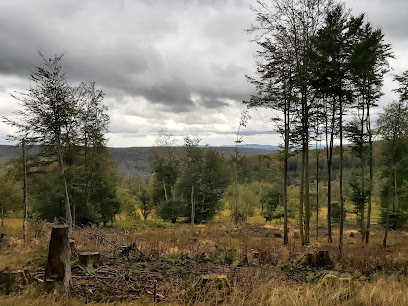
Nationalparkamt Hunsrück-Hochwald
8.0 km
Discover Germany's Hunsrück-Hochwald National Park: Witness the return of wilderness, explore ancient forests, and immerse yourself in nature's tranquility in this ecological haven.
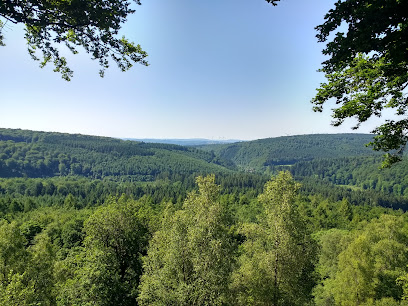
Kempfeld - Schönster Ort im Hunsrück
16.6 km
Discover Kempfeld, the 'Most Beautiful Place in Hunsrück': Explore scenic landscapes, delve into rich history, and experience German hospitality in this charming village.
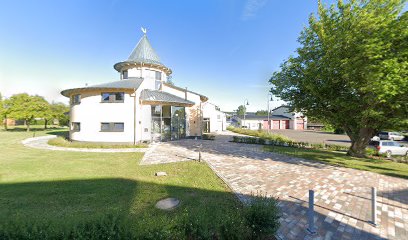
Traumschleife Rund um die Kama
17.4 km
Discover the enchanting Traumschleife Rund um die Kama near Idar-Oberstein: a blend of scenic hiking, gemstone history, and Roman heritage in the heart of the Saar-Hunsrück.
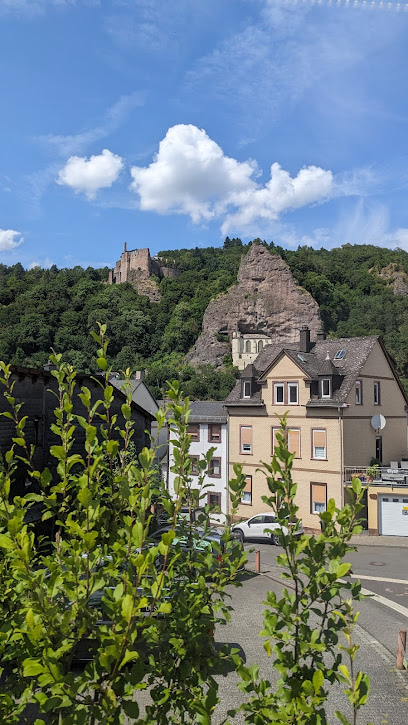
Hankelbrunnen
21.6 km
Discover the enchanting Hankelbrunnen in Herrstein, a historic fountain surrounded by lush greenery and charming half-timbered houses, embodying the town's unique cultural heritage.
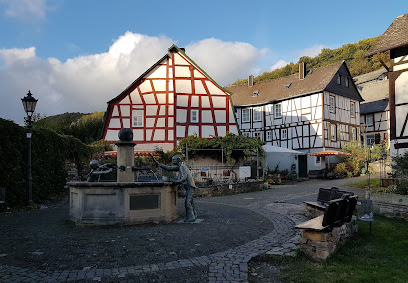
Mosellandtouristik GmbH
24.0 km
Discover the charm of the Mosel region with Mosellandtouristik, your go-to travel agency for unforgettable experiences and local insights.

Schloss Lieser
25.1 km
Experience the grandeur of a bygone era at Schloss Lieser, a meticulously restored castle hotel in the heart of the Moselle Valley, surrounded by vineyards and steeped in history.

Wandern im Hunsrück
28.0 km
Discover the Hunsrück's diverse hiking trails: explore rolling hills, dense forests, and historical landmarks in this picturesque German region between the Rhine and Moselle.
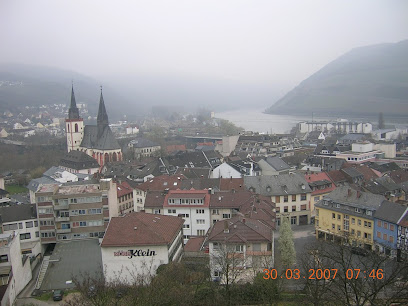
Wallmauer Bastion Pfalzel
28.4 km
Explore the Wallmauer Bastion Pfalzel in Trier, a historic gem showcasing medieval architecture and stunning views of the Moselle Valley.
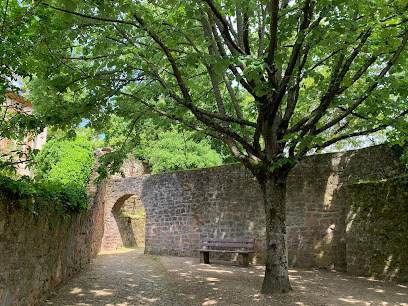
Begehbare geologische Karte von Rheinland-Pfalz
28.9 km
Discover the unique geological heritage of Rheinland-Pfalz at the Walkable Geological Map in Trier, a captivating outdoor attraction for all ages.
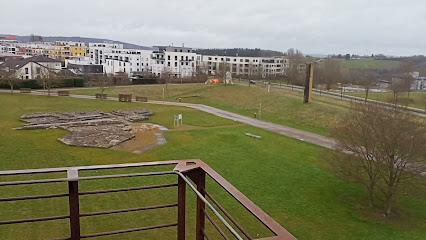
Schillereiche auf dem Wartekopf
29.3 km
Experience the breathtaking natural beauty and tranquil atmosphere at Schillereiche auf dem Wartekopf in Ulmet, Germany, a perfect destination for nature lovers.
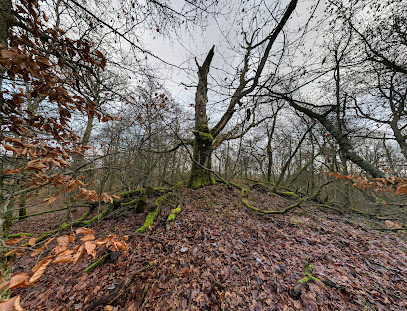
Petrisberg Aussicht
30.4 km
Experience stunning cityscapes and natural beauty at Petrisberg Aussicht, the premier observation deck in Trier, Germany.
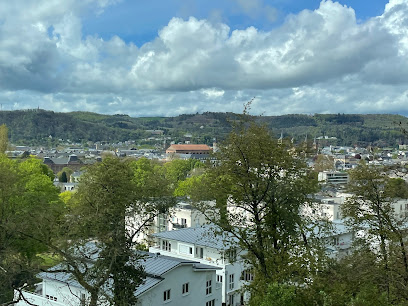
Saar-Hunsrück-Steig
30.5 km
Discover Germany's Saar-Hunsrück-Steig: A 410km hiking paradise through forests, valleys, and historical sites, awarded as the country's most beautiful long-distance trail.
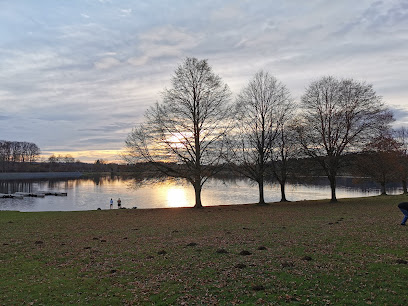
Meulenwald
30.8 km
Discover the serene beauty and rich history of Meulenwald, a sprawling forest near Schweich offering diverse hiking trails and panoramic views of the Moselle region.
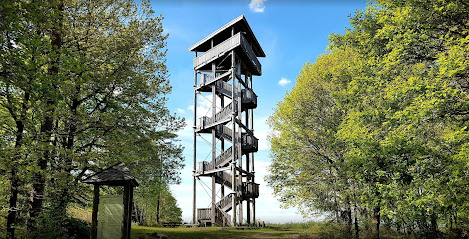
Hahn Airport
31.1 km
Discover Hahn Airport, a key international hub in Lautzenhausen, Germany, offering modern facilities and seamless travel connections to Europe and beyond.
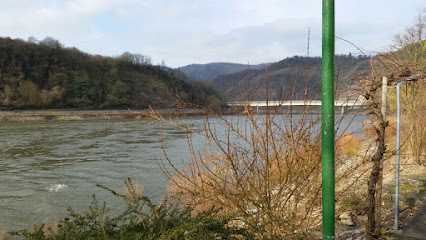
Unmissable attractions to see
Hinkelstein, Walhausen
16.0 km
Explore the Hinkelstein in Walhausen - a historic megalith that blends folklore with breathtaking natural beauty in Nohfelden, Germany.

Weinhaus Kurtrierer Hof GbR
19.6 km
Experience the exquisite wines and delightful cuisine at Weinhaus Kurtrierer Hof, the perfect retreat in the heart of the Moselle region.

Schloss Veldenz
21.2 km
Discover the enchanting Schloss Veldenz, a historical landmark and hiking area in Germany that offers breathtaking views and rich cultural heritage.
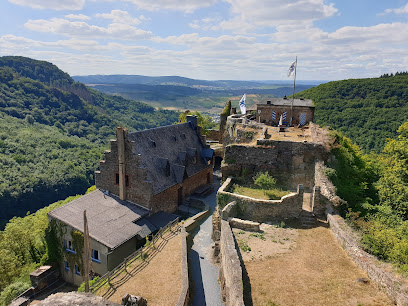
Burg Dagstuhl
21.9 km
Explore the historical marvel of Burg Dagstuhl, a captivating castle in Wadern, steeped in medieval charm and surrounded by breathtaking scenery.

Panoramablick
24.0 km
Discover breathtaking views of the Moselle River at Panoramablick, an enchanting observation deck in Piesport, Germany, perfect for nature lovers and photographers.
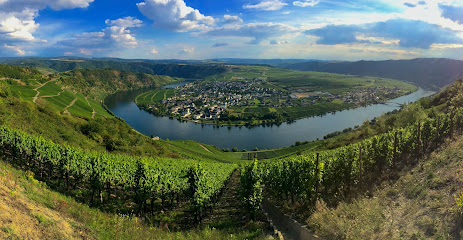
Burg Landshut
24.2 km
Explore the enchanting Burg Landshut in Bernkastel-Kues, a captivating historical landmark with breathtaking views and delightful European cuisine.
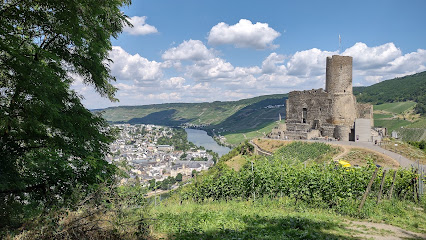
Cusanus -Sonnenuhr
24.7 km
Explore the enchanting Cusanus - Sonnenuhr in Bernkastel-Kues, where art meets astronomy in a stunning sundial experience.
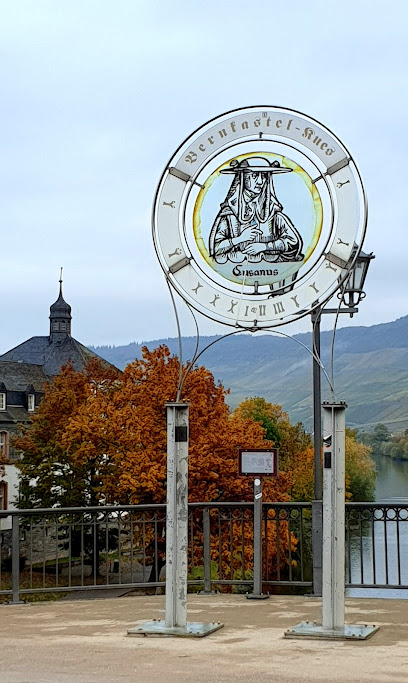
Advent Calendar House
24.7 km
Discover the enchanting charm of the Advent Calendar House in Bernkastel-Kues, where holiday magic comes alive all year round.
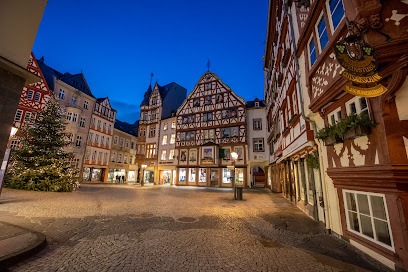
Mosel-Weinmuseum und Moselvinothek
24.8 km
Discover the rich heritage of Mosel wines at the Mosel-Weinmuseum und Moselvinothek in Bernkastel-Kues – a must-visit for tourists and wine lovers alike.
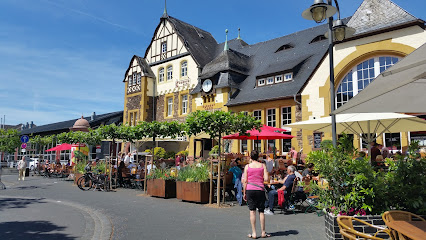
Museum Graacher Tor
24.8 km
Explore the cultural heritage of Bernkastel-Kues at Museum Graacher Tor, a captivating heritage museum filled with stories and artifacts.

Römische Villa urbana
25.0 km
Explore the Römische Villa Urbana, a stunning Roman villa reconstruction in Longuich, Germany, showcasing ancient architecture and history.
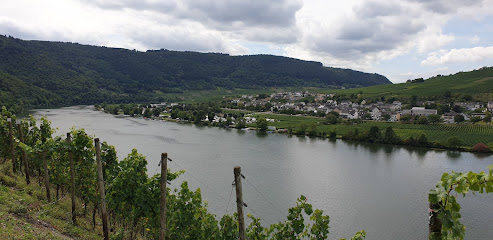
Moselle Hills
25.0 km
Explore the breathtaking Moselle Hills, a stunning mountain peak near Klüsserath, perfect for hiking, wine tasting, and immersing in local culture.
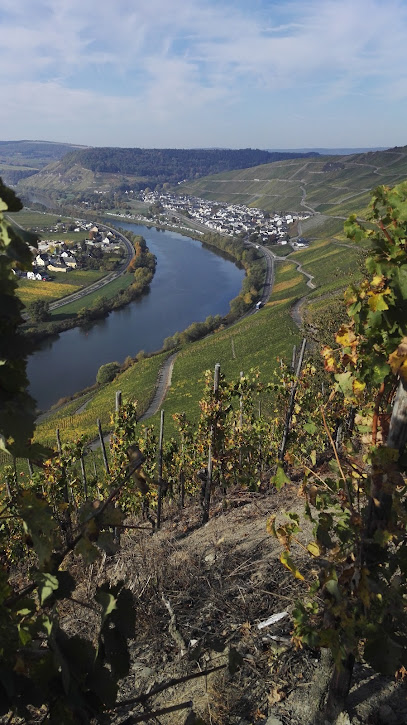
Wildstein
25.8 km
Discover the serene hiking trails and breathtaking landscapes of Wildstein in Traben-Trarbach, a perfect getaway for nature lovers and outdoor adventurers.
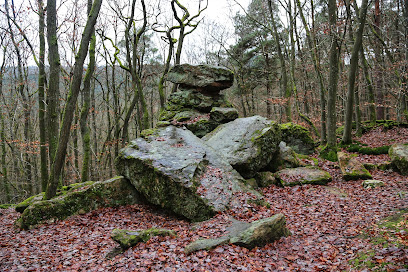
Grevenburg Castle Ruins
28.4 km
Discover the enchanting Grevenburg Castle Ruins, a historical gem with breathtaking views and hiking trails in the heart of the Mosel Valley.
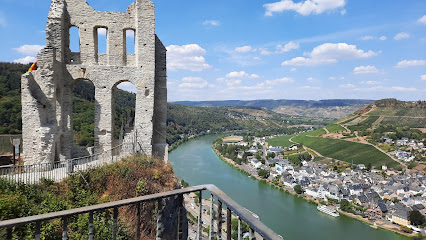
Zeitreise-Museum
28.5 km
Discover the rich history of Traben-Trarbach at the captivating Zeitreise-Museum, where the past comes alive through engaging exhibits and artifacts.
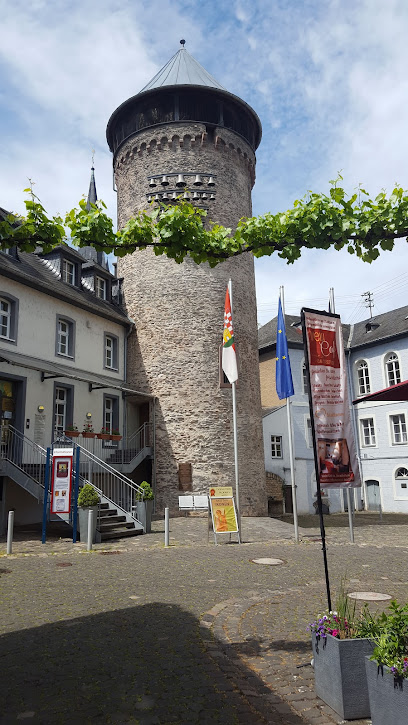
Essential places to dine
Landgasthof Alt-Birkenfeld
9.0 km
Discover the essence of traditional German dining at Landgasthof Alt-Birkenfeld in beautiful Birkenfeld.
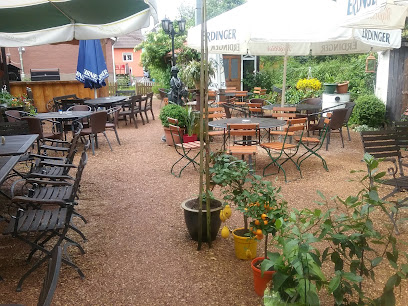
Wein & Tafelhaus
18.5 km
Discover exquisite fine dining at Wein & Tafelhaus in Trittenheim - where local flavors meet elegant ambiance along the Mosel River.

Das Spießbratenhaus - Restaurant Alte-Kanzlei
18.8 km
Experience authentic German flavors at Das Spießbratenhaus in Idar-Oberstein, where traditional meat dishes meet a cozy atmosphere.
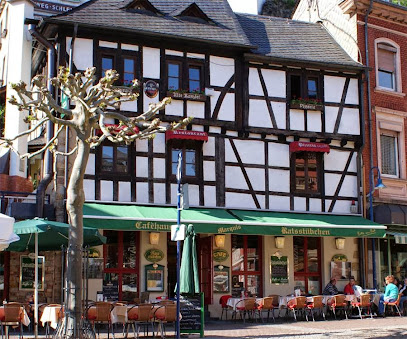
Moselhotel Ludwigs
21.6 km
Experience exceptional hospitality and authentic local cuisine at Moselhotel Ludwigs in the scenic Mosel Valley.

Zum Winzerkeller
22.7 km
Discover authentic German flavors and exquisite Moselle wines at Zum Winzerkeller in picturesque Fell.
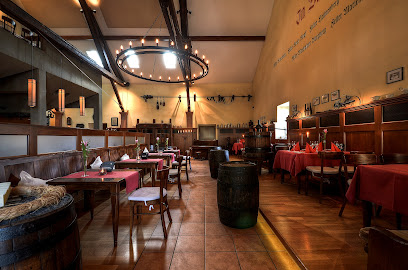
Brühler Hof Inh. Fam. Eckert
22.7 km
Experience authentic German cuisine at Brühler Hof in Wintrich—where tradition meets exceptional dining.
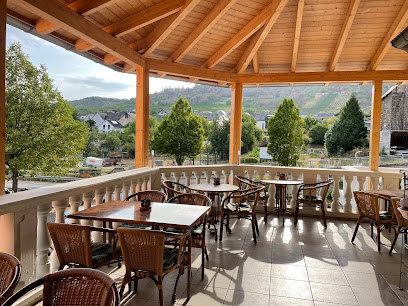
schanz. restaurant.
22.9 km
Experience exquisite fine dining at Schanz Restaurant in Piesport – where culinary artistry meets local flavors amidst stunning vineyard views.
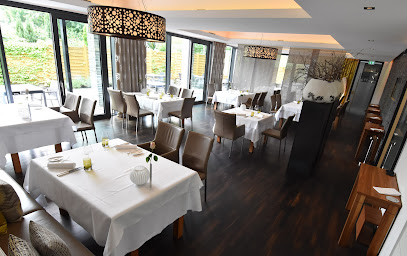
Restaurant Ochs
24.4 km
Experience authentic European flavors at Restaurant Ochs in Bernkastel-Kues, where delicious meat dishes meet charming ambiance.
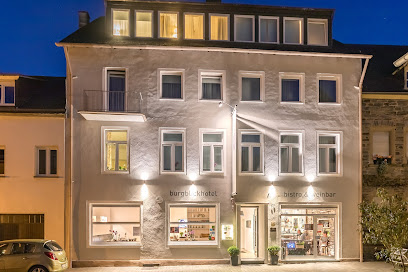
Restaurant Alt Bernkastel
24.5 km
Discover authentic flavors at Restaurant Alt Bernkastel, where local cuisine meets warm hospitality in the heart of Bernkastel-Kues.
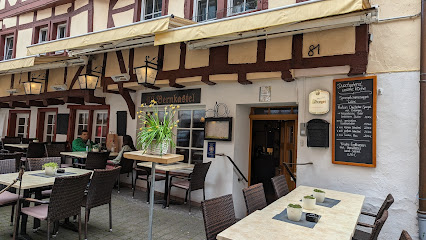
Restaurant Anno 1640
24.7 km
Experience authentic German cuisine at Restaurant Anno 1640 in Bernkastel-Kues, where tradition meets modern culinary excellence.
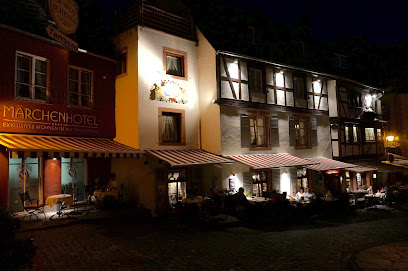
Restaurant Richtershof 1809
24.7 km
Discover exquisite fine dining at Restaurant Richtershof 1809 in Mülheim - where local flavors meet culinary artistry along the beautiful Moselle River.
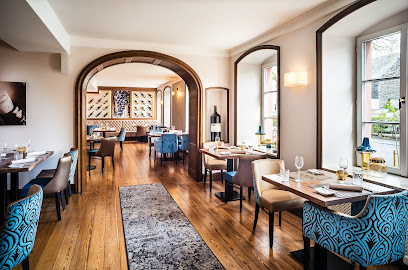
Landgasthof Schuck
24.7 km
Discover cozy accommodations and authentic German cuisine at Landgasthof Schuck in picturesque Kirchenbollenbach.
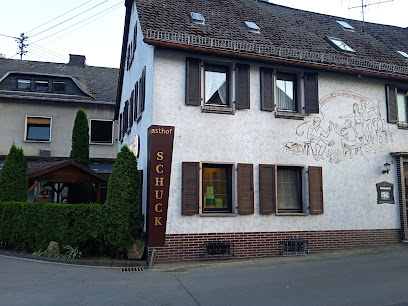
Restaurant Cafe Thiesen
24.8 km
Experience exquisite dining at Restaurant Cafe Thiesen in Bernkastel-Kues - where local flavors meet modern culinary artistry.
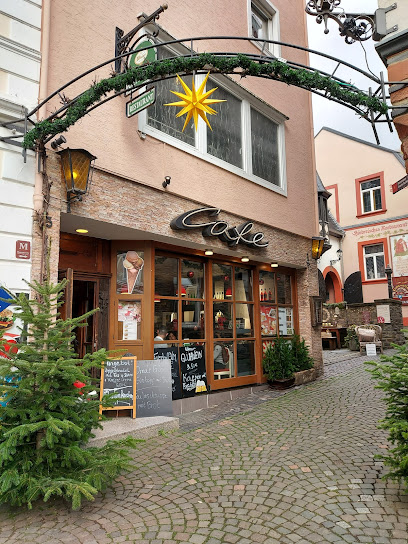
Restaurant Graacher Tor
24.8 km
Experience authentic Moselle cuisine at Restaurant Graacher Tor in Bernkastel-Kues – where every meal tells a story.
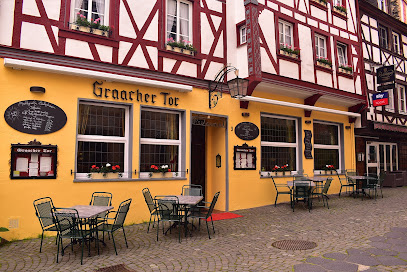
Alter Moselbahnhof
24.8 km
Experience exquisite dining at Alter Moselbahnhof with stunning views over the Mosel River in Bernkastel-Kues.

Markets, malls and hidden boutiques
Die Vitrine
24.5 km
Experience the essence of Brauneberg at Die Vitrine, where handcrafted gifts meet exquisite local wines in a charming setting.
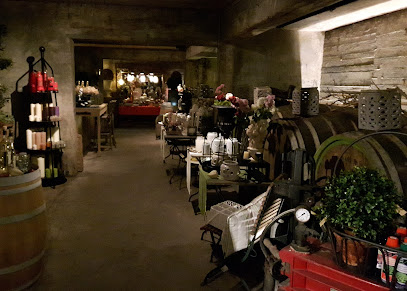
Karlsbader Platz
24.8 km
Experience the enchanting Karlsbader Platz in Bernkastel-Kues, a vibrant plaza offering local culture, charm, and scenic views.
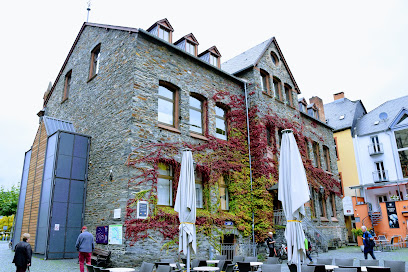
نور شوب - Nour Shop
30.3 km
Discover unique gifts and local treasures at Nour Shop in Trier, where every item tells a story.

Sports&More Ulli Weckmann e.K.
30.4 km
Explore Lautzenhausen with top-notch gear from Sports&More Ulli Weckmann, your premier sporting goods destination for all outdoor adventures.
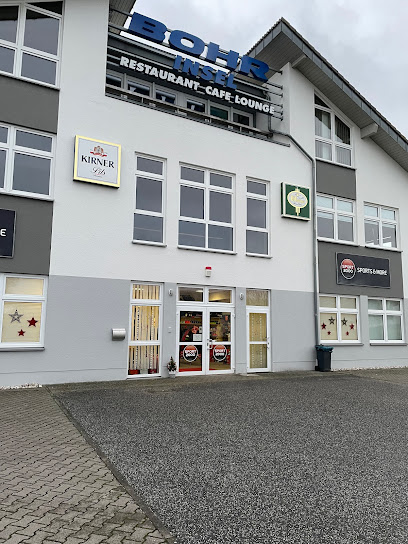
RukaDesign
30.6 km
Discover unique gifts and local craftsmanship at RukaDesign in Eppelborn, a must-visit destination for tourists seeking memorable souvenirs.

Diversio GmbH & Co. KG
30.8 km
Discover top-notch workwear and outdoor gear at Diversio GmbH & Co. KG in Sohren, your destination for quality and variety.
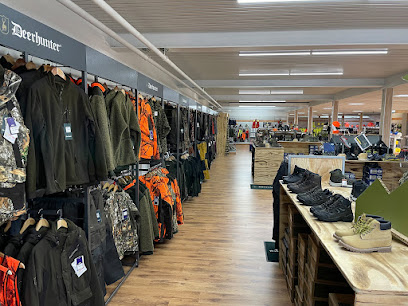
Top Designer Brands Wholesale Stock Apparel
30.8 km
Explore Top Designer Brands Wholesale Stock Apparel in Sohren for unbeatable prices on stylish clothing and accessories for the whole family.

Leyendecker bastelstube GmbH & Co.KG
31.6 km
Unleash your creativity at Leyendecker Bastelstube in Trier, where art supplies, toys, and inspiration come together in a vibrant craft haven.

Trier Galerie
31.6 km
Experience the best of shopping and dining at Trier Galerie, where local charm meets international brands in the heart of Trier.

Kaefer Sohren
31.7 km
Discover Kaefer Sohren, a charming home goods store in Sohren, offering exquisite chinaware, festive Christmas items, and stylish accessories for your travels.
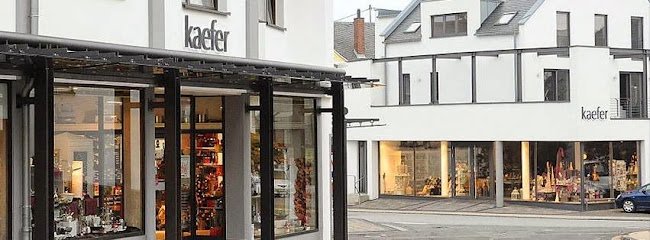
MaKa Creativ
33.5 km
Uncover unique gifts and personalized picture framing services at MaKa Creativ, a must-visit shop for creative souvenirs.

Action Wittlich
34.1 km
Discover Action Wittlich, your ultimate destination for gifts, DIY supplies, and unique finds in the heart of Wittlich, Germany.

Alex Jeans
35.2 km
Discover high-quality denim and stylish men's clothing at Alex Jeans, the go-to fashion spot in Illingen, Germany.

Erika Thiel Textilhandel
35.2 km
Explore the vibrant world of textiles at Erika Thiel Textilhandel in Illingen, a fabric lover's paradise with a diverse selection for all your crafting needs.

Inside Mode Für Sie
35.2 km
Discover style and elegance at Inside Mode Für Sie, a boutique in Illingen offering curated fashion and personalized service.

Essential bars & hidden hideouts
VW Cocktail‘s GbR
16.5 km
Discover the vibrant cocktail culture at VW Cocktail‘s GbR in Idar-Oberstein, where unique flavors and a lively atmosphere await every visitor.
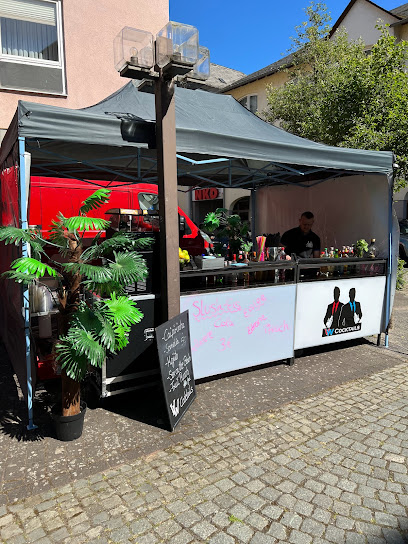
Weinstube St. Sebastian
24.6 km
Experience authentic Mosel cuisine and exceptional wines at Weinstube St. Sebastian in charming Bernkastel-Kues.
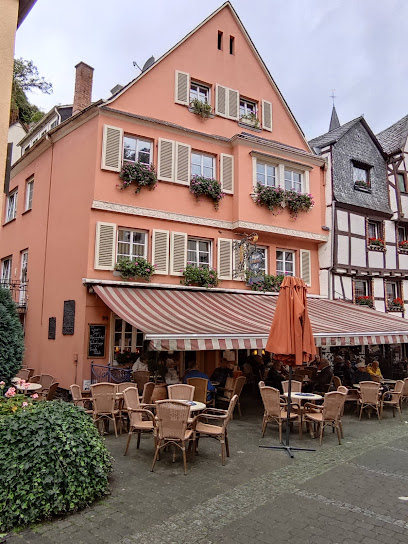
Weinstube Spitzhäuschen
24.6 km
Experience the essence of Mosel wines at Weinstube Spitzhäuschen, a charming wine bar in Bernkastel-Kues offering local flavors and warm hospitality.
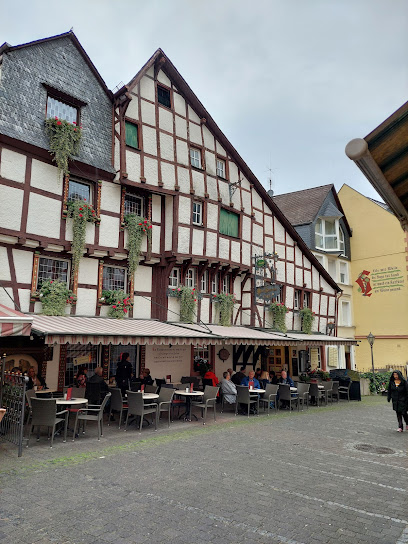
Brückenkeller
24.6 km
Explore the exquisite wines of Bernkastel-Kues at Brückenkeller, a cozy wine bar offering local and international selections in an inviting atmosphere.
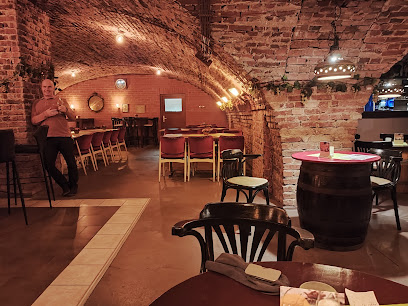
Bitchen
24.7 km
Discover the cozy charm of Bitchen, a vibrant pub in Bernkastel-Kues offering local brews, hearty meals, and a warm atmosphere.
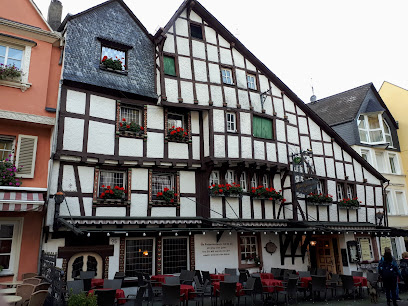
Wunderbar Cocktailbar
24.8 km
Experience the lively atmosphere and expertly crafted cocktails at Wunderbar Cocktailbar in Bernkastel-Kues.

Tresor Wine & Bar
24.8 km
Experience the charm of Bernkastel-Kues at Tresor Wine & Bar, where exquisite wines and a cozy atmosphere await every visitor.

Hotel Weisser Bär
24.9 km
Immerse yourself in the culinary wonders of Hotel Weisser Bär, where local flavors meet exceptional hospitality in the scenic Moselle region.

Cocos Café & Sportsbar Traben Trarbach
28.5 km
Experience the vibrant atmosphere of Cocos Café & Sportsbar in Traben-Trarbach, where delicious food meets exhilarating sports entertainment.

Bettys Bar & Lounge
28.8 km
Experience the vibrant nightlife of Traben-Trarbach at Betty's Bar & Lounge, where delightful drinks and lively atmosphere await every visitor.

Brauhaus Kloster Machern
29.5 km
Experience the finest craft beer and authentic German cuisine at Brauhaus Kloster Machern in the heart of Bernkastel-Kues.
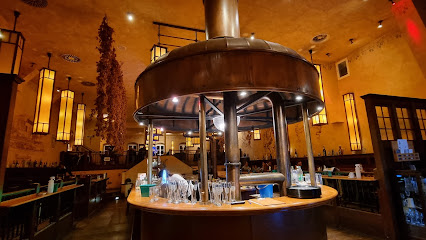
Weingut-Weinstube-Restaurant von Nell
29.8 km
Discover the flavors of Trier at Weingut-Weinstube-Restaurant von Nell, where exceptional wines and regional cuisine come together in a cozy setting.
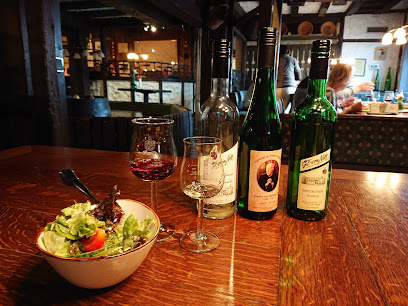
EX-IT Cocktail-/Shisha-Bar
30.0 km
Experience the vibrant nightlife at EX-IT Cocktail-/Shisha-Bar in Kirn, where exceptional cocktails and shisha await in a chic atmosphere.
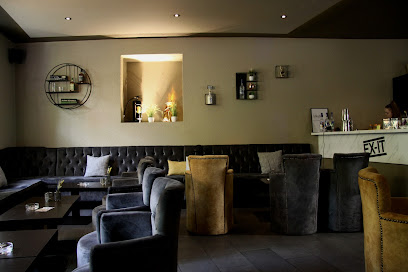
Saloon Luckie Luke
30.9 km
Discover the vibrant local scene at Saloon Luckie Luke, a unique bar and café in Lautzenhausen offering local brews and delightful snacks.
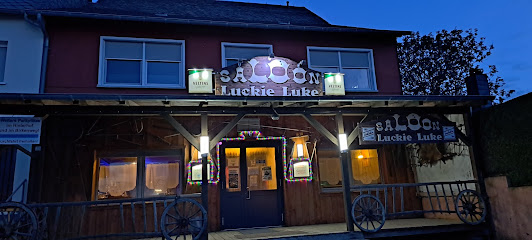
MyPlace - hotel.bar.restaurant
31.0 km
Experience the perfect blend of comfort, dining, and nightlife at MyPlace - your ultimate destination in Lautzenhausen.




